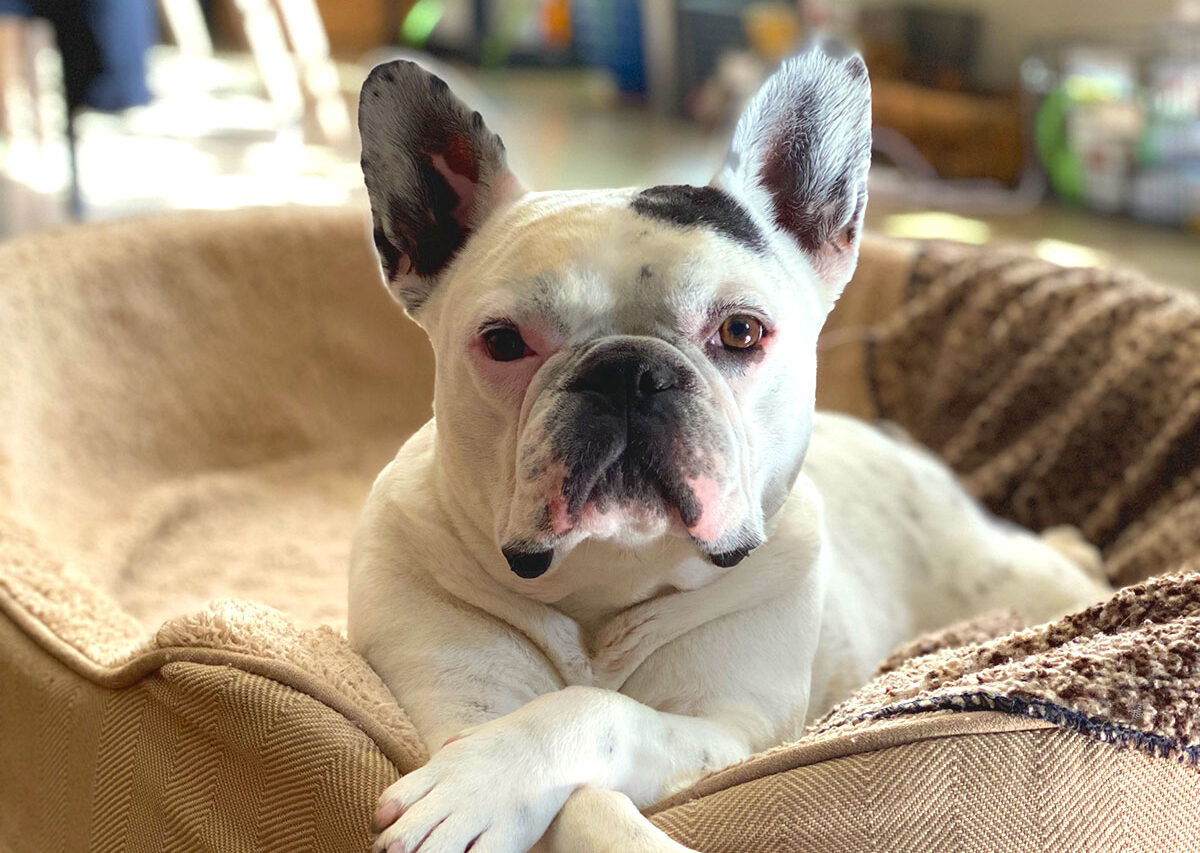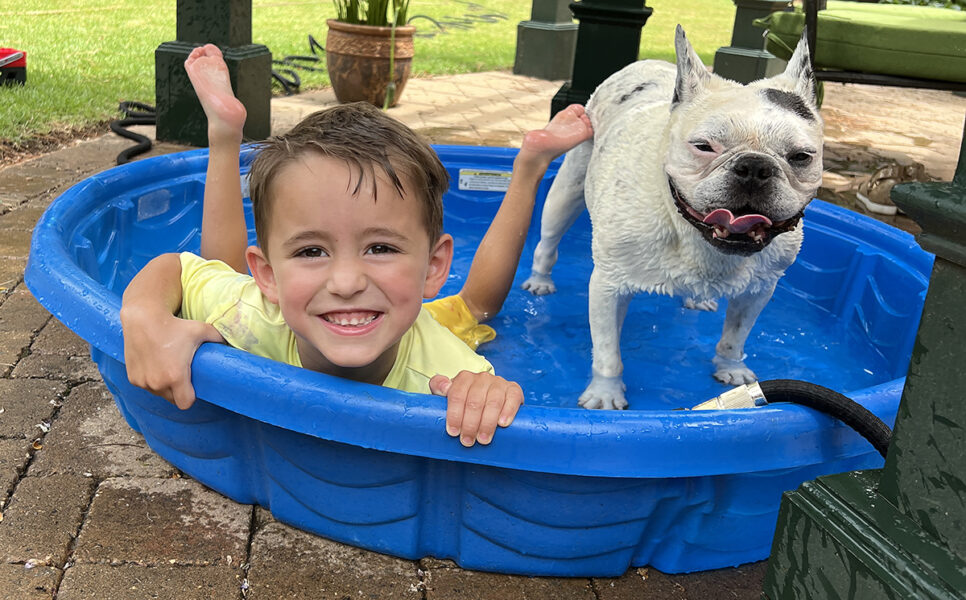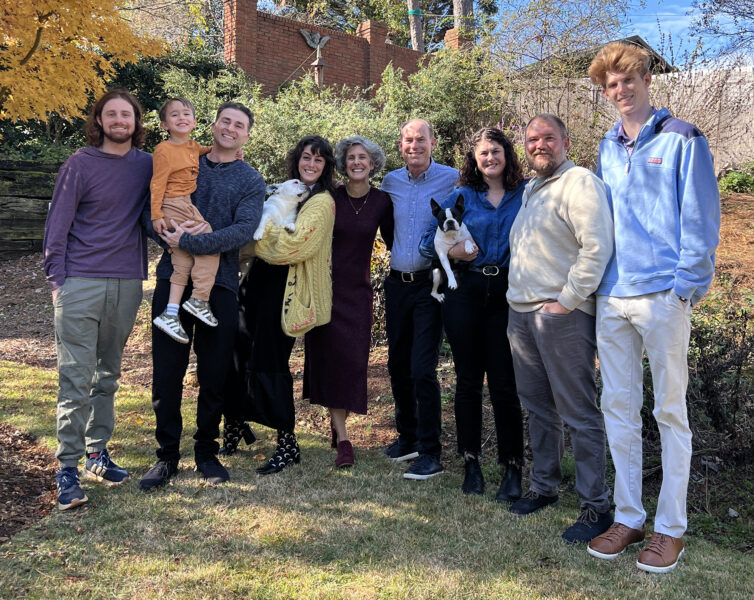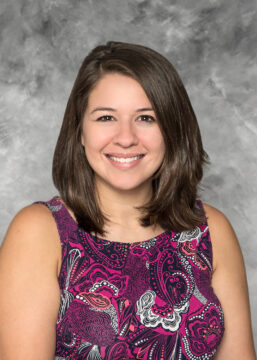Sharing the success
Since Criquette’s surgery, the VTH has acquired its own equipment and consulted with other veterinary schools in its use. Wallace says a surgery resident who was on Criquette’s care team is now on the faculty at Texas A&M University. When confronted with a case similar to Criquette’s, she reached out to Wallace for consultation.
McLear also sat in with Wallace and Bartges on a second procedure performed on a Weimaraner named Isabella. Isabella’s Virginia family read a scientific paper the surgical team published in the Journal of the American Veterinary Medical Association after Criquette’s surgery and brought her to Georgia for treatment.
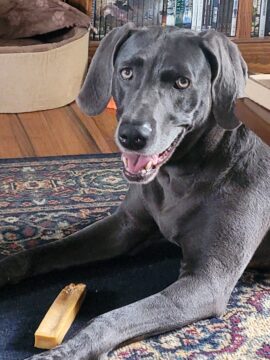
Isabella, a Weimeraner from Virginia, was the second dog to receive ablation surgery for a nasal tumor at the UGA Veterinary Teaching Hospital. (Provided image)
Isabella’s nasal tumor turned out to be malignant and therefore recurred after treatment, but her family were nonetheless grateful for the extra time it gave for them to enjoy her. “They were, and still are, in a lot of ways, our biggest cheerleaders,” Wallace says. “They were actually on a Facebook group for dogs with nasal tumors and they put their story out there. We had a big rush after that where we were reviewing medical records all the way from California of people who said, ‘If this will work for my dog, I will come.’”
Isabella’s case taught the team to widen their focus when looking at patients who might benefit from ablation. Malignant tumors are more destructive than benign ones, eroding bone and growing aggressively with a high probability of recurrence. Even though Isabella’s cancer returned, the team gave her family a healthy year with her that they wouldn’t have had without the option of ablation. As they become more proficient with small benign growths the team is keeping an eye on the possible applications of ablation in treating malignant growths caught early.
“We may get to a point of deciding if it’s malignant but it’s not overly aggressive, maybe that’s still a good candidate, realizing it’s going to come back, but maybe we can slow it down,” Wallace says. “The other option would be if you go in this way and remove as much as you can and then follow it up with radiation therapy. Would that give you a better response? Those are all things you don’t know. We certainly don’t know right now.”
‘You can’t get that everywhere’
McLear still consults with the VTH team to evaluate and execute ablation to treat nasal tumors in dogs. He praises the staff and administration of the VTH for their willingness to step outside their comfort zone and work with his family to cure Criquette.
“You can’t get that everywhere. People aren’t always willing to take the chance when you’re busy and you know what you do, and you do well,” he says.

Dr. Joe Bartges
Bartges says the fact that the procedure was proven to work well in humans with similar diagnoses made the ask an easy sell.
“I don’t know that I had a preconceived notion of how successful this was going to be in either of these patients, but it was more a matter of what can we do that’s different than what we’re already doing, and do we get a different outcome than what we usually get,” Bartges says. “That sounds like a very general statement, but if you do what you’ve always done, you always get what you always got. And so, trying to look at other ways of managing things beyond the way we’ve always done it, can you get better? Well, you don’t know until you start doing them. It’s easy to say we’re doing fine and not change, and it’s a whole different thing to say well let’s try something different and see what happens.”
